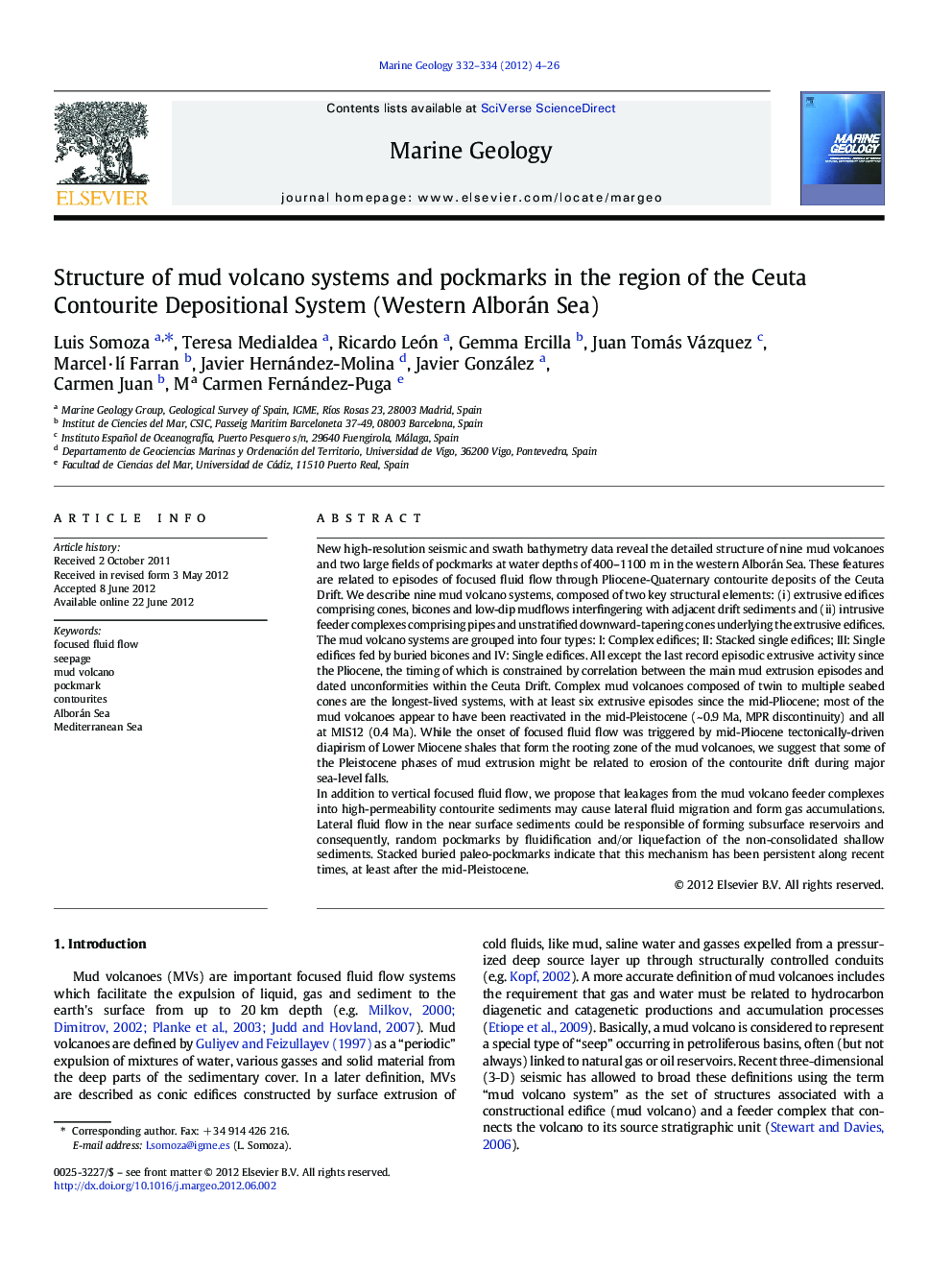| کد مقاله | کد نشریه | سال انتشار | مقاله انگلیسی | نسخه تمام متن |
|---|---|---|---|---|
| 4718467 | 1639118 | 2012 | 23 صفحه PDF | دانلود رایگان |

New high-resolution seismic and swath bathymetry data reveal the detailed structure of nine mud volcanoes and two large fields of pockmarks at water depths of 400–1100 m in the western Alborán Sea. These features are related to episodes of focused fluid flow through Pliocene-Quaternary contourite deposits of the Ceuta Drift. We describe nine mud volcano systems, composed of two key structural elements: (i) extrusive edifices comprising cones, bicones and low-dip mudflows interfingering with adjacent drift sediments and (ii) intrusive feeder complexes comprising pipes and unstratified downward-tapering cones underlying the extrusive edifices. The mud volcano systems are grouped into four types: I: Complex edifices; II: Stacked single edifices; III: Single edifices fed by buried bicones and IV: Single edifices. All except the last record episodic extrusive activity since the Pliocene, the timing of which is constrained by correlation between the main mud extrusion episodes and dated unconformities within the Ceuta Drift. Complex mud volcanoes composed of twin to multiple seabed cones are the longest-lived systems, with at least six extrusive episodes since the mid-Pliocene; most of the mud volcanoes appear to have been reactivated in the mid-Pleistocene (~ 0.9 Ma, MPR discontinuity) and all at MIS12 (0.4 Ma). While the onset of focused fluid flow was triggered by mid-Pliocene tectonically-driven diapirism of Lower Miocene shales that form the rooting zone of the mud volcanoes, we suggest that some of the Pleistocene phases of mud extrusion might be related to erosion of the contourite drift during major sea-level falls.In addition to vertical focused fluid flow, we propose that leakages from the mud volcano feeder complexes into high-permeability contourite sediments may cause lateral fluid migration and form gas accumulations. Lateral fluid flow in the near surface sediments could be responsible of forming subsurface reservoirs and consequently, random pockmarks by fluidification and/or liquefaction of the non-consolidated shallow sediments. Stacked buried paleo-pockmarks indicate that this mechanism has been persistent along recent times, at least after the mid-Pleistocene.
► We analyze structure of nine mud volcanoes and two fields of pockmarks.
► Complex mud volcanoes are long-lived system since the mid-Pliocene times.
► Single stacked mud volcanoes show reactivations since mid-Pleistocene.
► Pockmarks related to lateral fluid flow leaked from mud volcano feeder complexes.
► Episodic mud extrusions related to major sea-level falls during the Quaternary.
Journal: Marine Geology - Volumes 332–334, 1 December 2012, Pages 4–26